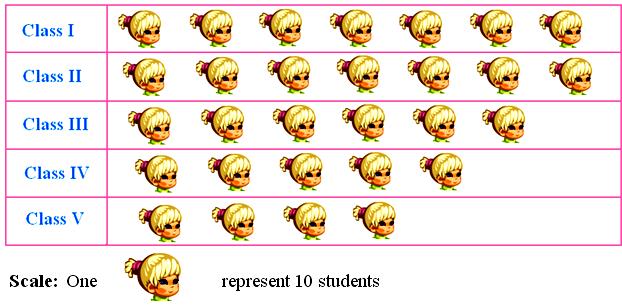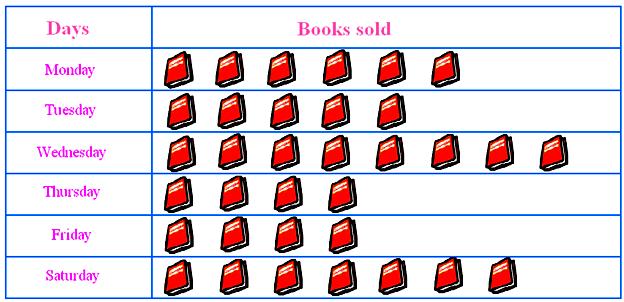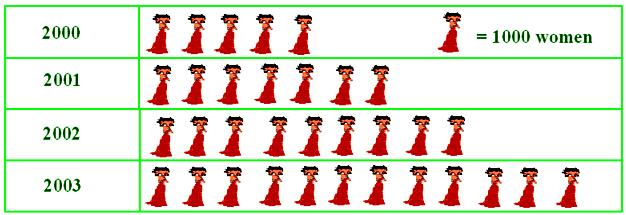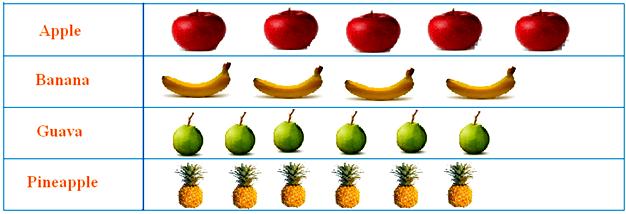Subscribe to our ▶️ YouTube channel 🔴 for the latest videos, updates, and tips.
Pictograph to Represent The Collected Data
Pictures or symbols are made in a pictograph to represent the collected data. So, we can say that a pictograph represents the data and gives information quickly and clearly.
Pictorial representation of data:
Representation of numerical data through pictures or graphs is called pictorial representation of data.
Such representation is useful for the purpose of quick and clear understanding and also for making comparisons.
The same type of pictures or symbols is used to represent or number of objects.
The symbols are clear and self explanatory. The quantity that each symbol represents is indicated clearly in the representation.
It is helpful to have a picture stand for more than one item as we are able to show large number.
A pictograph has a title and is labeled.
A key is necessary to understand the information given.
The symbol used is simple and self explanatory.
It enables us to compare at a glance, the category which is most popular/least popular.
Here are some examples of forming pictograph with the help of collected data:
1. In a school the number of students class wise are as given below:
Make a pictograph to represent the above data.
(Two columns, one for class and the other for number of students, are made. For the number of students, the column is wide.)
There
are five rows for the classes I to V. A scale is fixed: One face is
taken to represent 10 students. So, for 70 students of class I, 7 faces
are made. For Class II also 7 faces are made for 70 students. For 60
students of class III there are 6 faces. For 50 students of class IV 5
faces and for 40 students of class V there are 4 faces.
2.
A bookseller sold 60 books on Monday, on Tuesday 50 books, on Wednesday
80 books, on Thursday 40 books, on Friday 40 books and on Saturday 70
books. Draw a pictograph for the books sold during the week.
Solution:
For six days six rows are made.
In front of Monday there are 6 books, in front of Tuesday 5 books, in
front of Wednesday 8 books, in front of Thursday and Friday 4 books in
each row and in front of Saturday there are 7 books.
Thus, the pictograph is formed.
3. In the following table there is given the number of women who use cosmetics in a city in different years. Represent the above data by pictograph.
Solution:
Pictograph of numerical data of women using cosmetics
4. A fruit seller sold the following number of different fruits
as given below. Form a pictograph with the help of the given data.
Solution:
1 fruit represents 10 fruits
The above examples on pictograph to represent the collected data.
Related Concepts on Data Handling
● Pictograph to Represent The Collected Data
From Pictograph to Represent The Collected Data to HOME PAGE
Didn't find what you were looking for? Or want to know more information about Math Only Math. Use this Google Search to find what you need.







New! Comments
Have your say about what you just read! Leave me a comment in the box below. Ask a Question or Answer a Question.